Although bearings play an important role in keeping your bike rolling along, they usually get neglected when it comes to maintenance. Bearing failure is kind of rare, but if it happens, it can ruin a day of riding and can cost a lot in repairs if a hub cracks. Inspecting, and greasing wheel bearings is easy to do. Pictures are of a Honda wheel, other brands might have a different set up, but the maintenance is the same.
Tools I use are a large screwdriver, a dull pointed exacto knife, and a syringe filled with axle grease and a small piece of tubing on the end
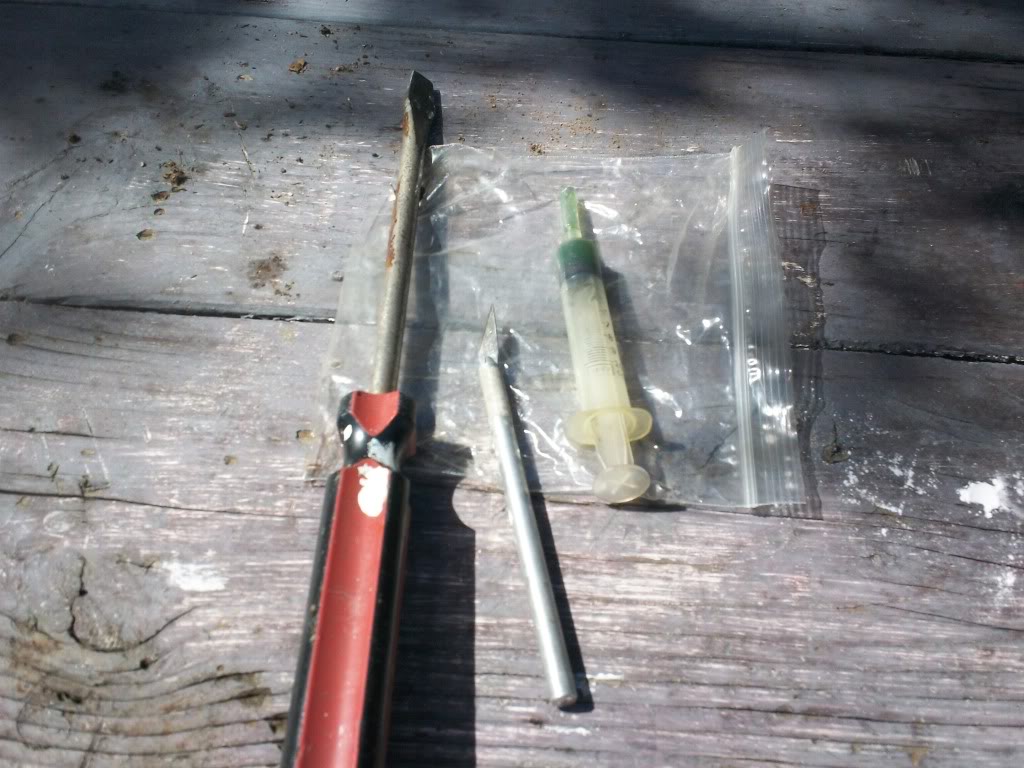
First, obviously, is to remove the wheel, I usually check the bearings when installing a new tire
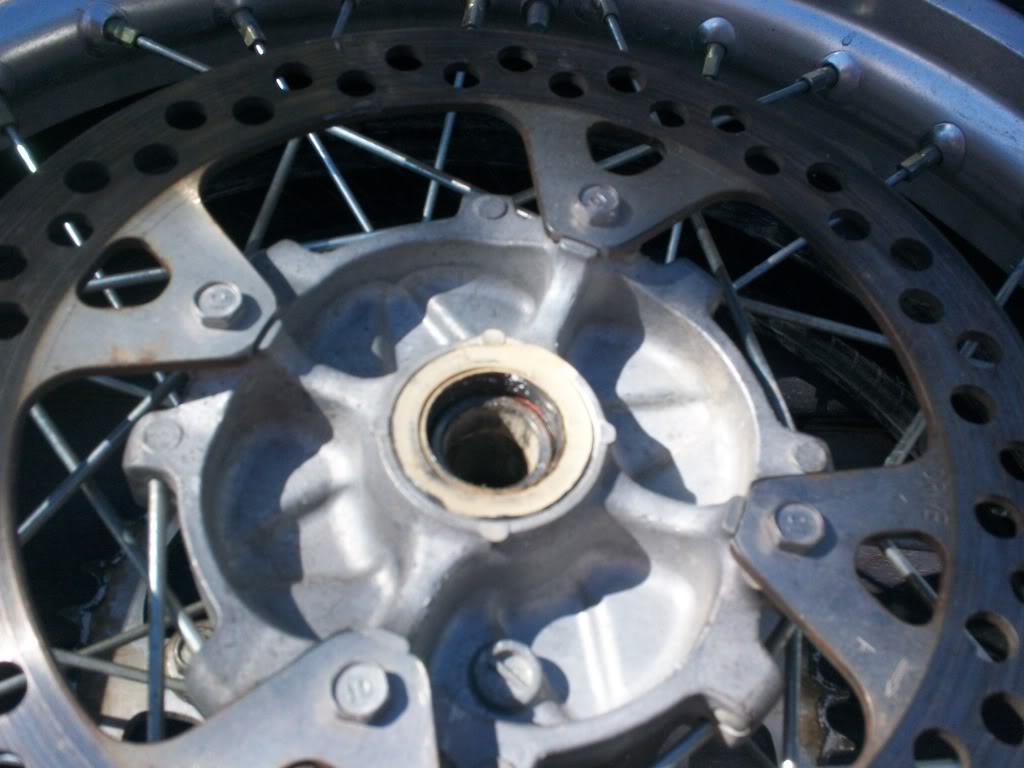
Use the large screwdriver to gently pry the outer dust cap out
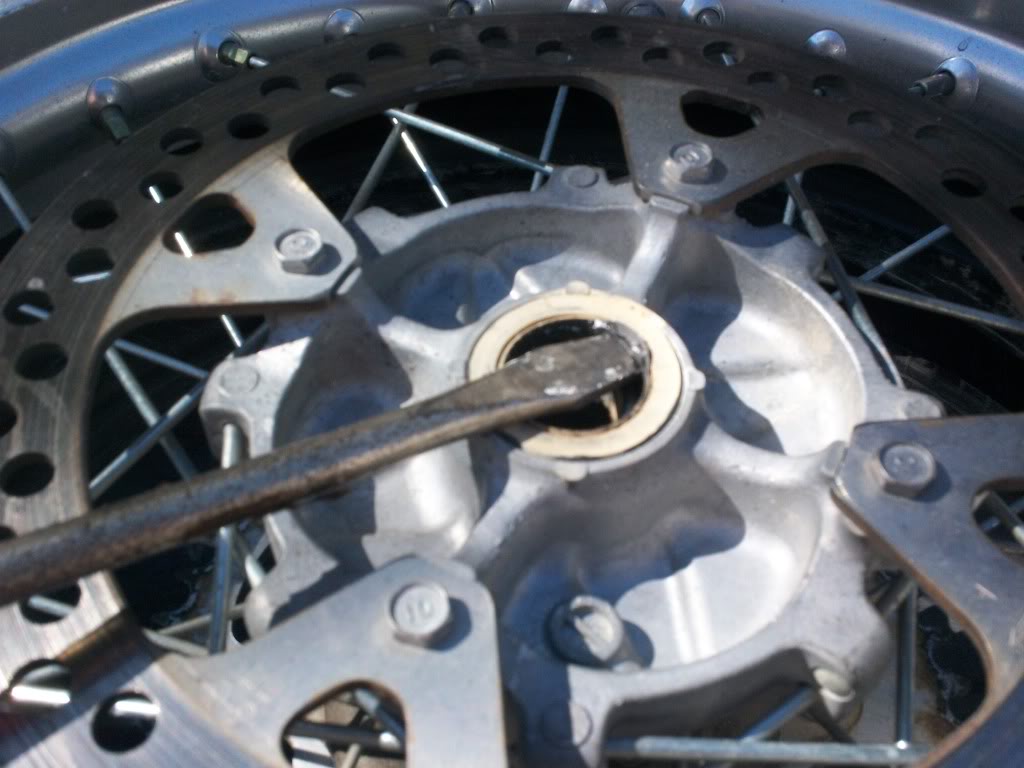
Use a rag to clean as you disassemble, don't use any chemical solvents that could contaminate the bearing grease.
Bearing is now accessible
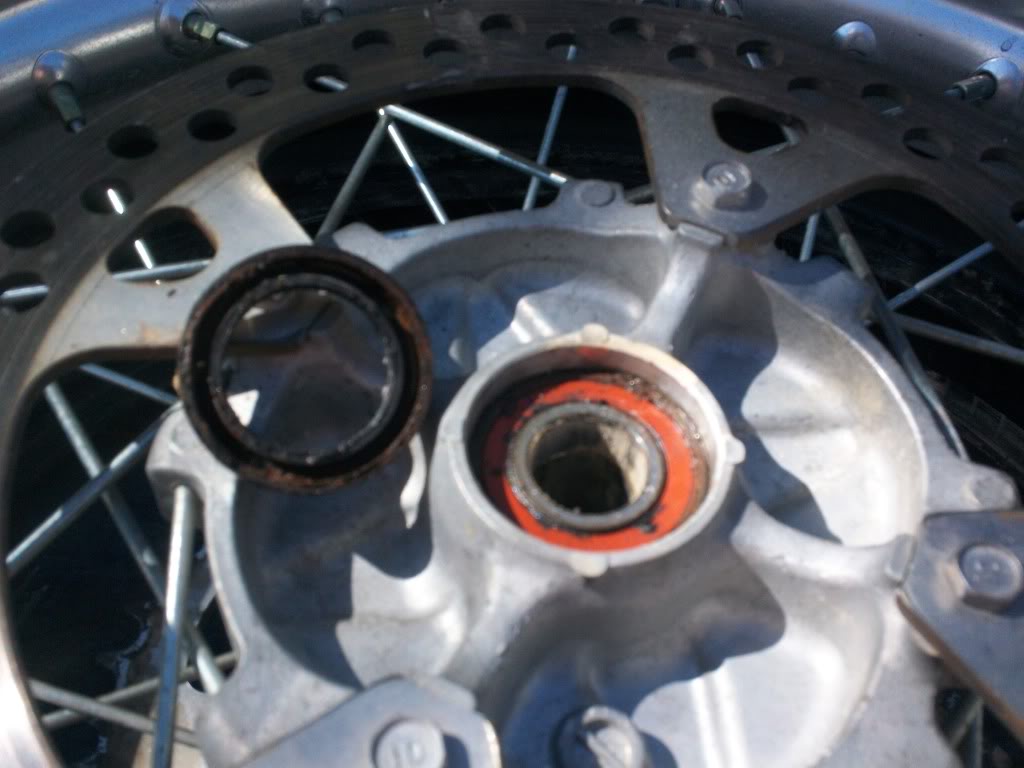
Now is a good time to do a first check on the bearing, stick your finger in the hole and twirl.....
Bearing should be tight, no side to side play.
Now comes the tricky part, using the exacto knife, CAREFULLY pry off the bearing dust cap by inserting the point on the inside and twisting gently, same idea as using a tire iron on a wheel. Be careful not to cut the soft rubber. A slight twist should result in the seal popping out.
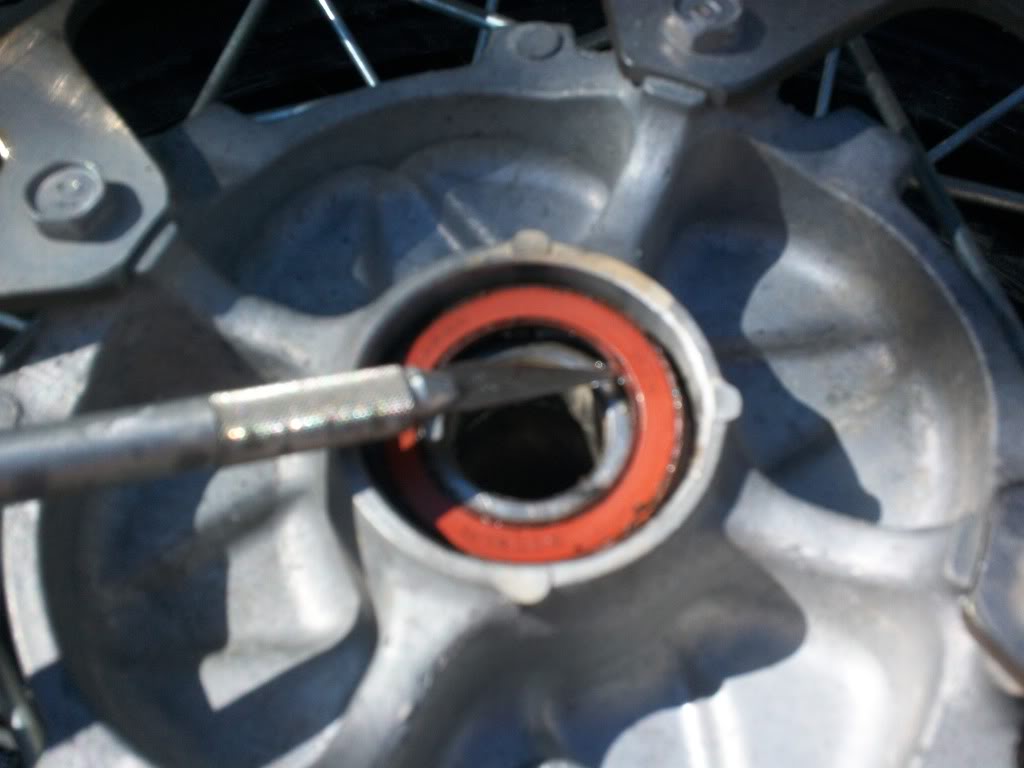
Now you are looking at the guts of the bearing. Hopefully there is grease inside. Check the condition of the retainer - the metal piece that holds the ball bearings in place. If it's worn or broken, the bearing is no good and must be replaced. if it's good and there are no other signs of wear or water contamination, look at the amount of grease, if it's lacking, pack some more in. You can use your finger, but the syringe is a lot less messier, an old syringe from an epoxy kit works great.
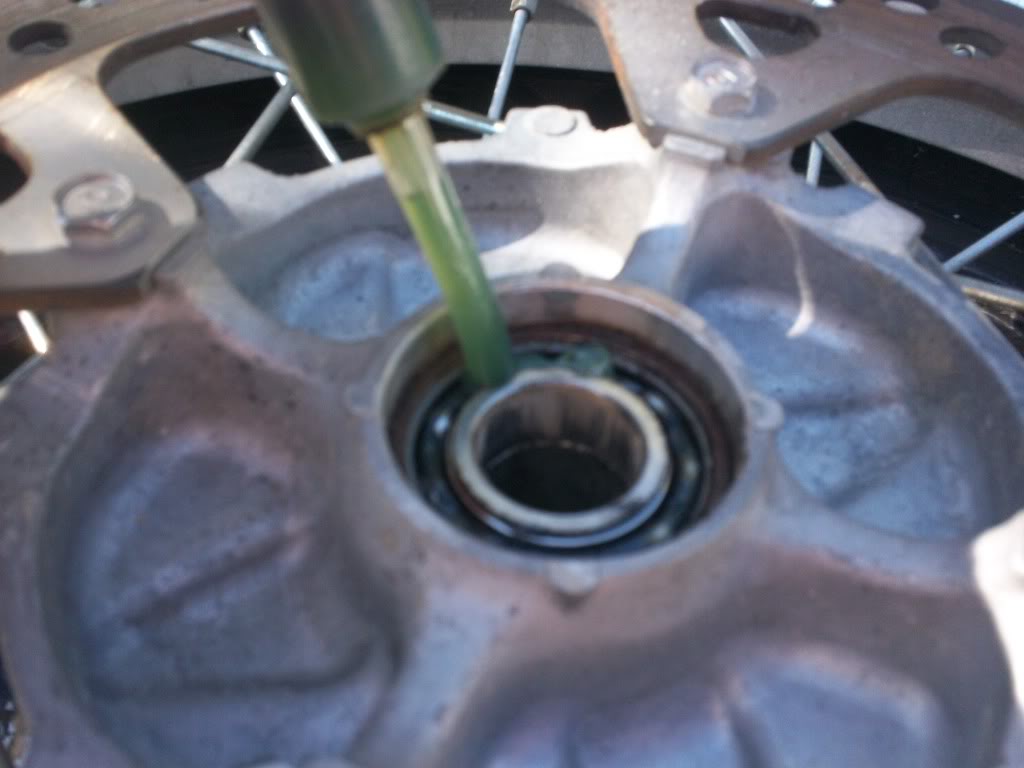
Which kind of grease to use is like asking what kind of motor oil to use, everyone has a different answer. You can use brand specific (expensive) grease from your local dealer, I use Bel Ray Waterproof grease, been using it for over twenty years, no bearing failures yet. Fill all cavities but do not over fill, use your finger to pack it in. Next, install the rubber bearing dust cover, sliding your finger around it will cause it to pop into place. Then, use a rubber mallet to tap the outer cover back in. If the outer dust cap is recessed inside the hub an appropriate sized socket along with the rubber mallet can be used to seat it.
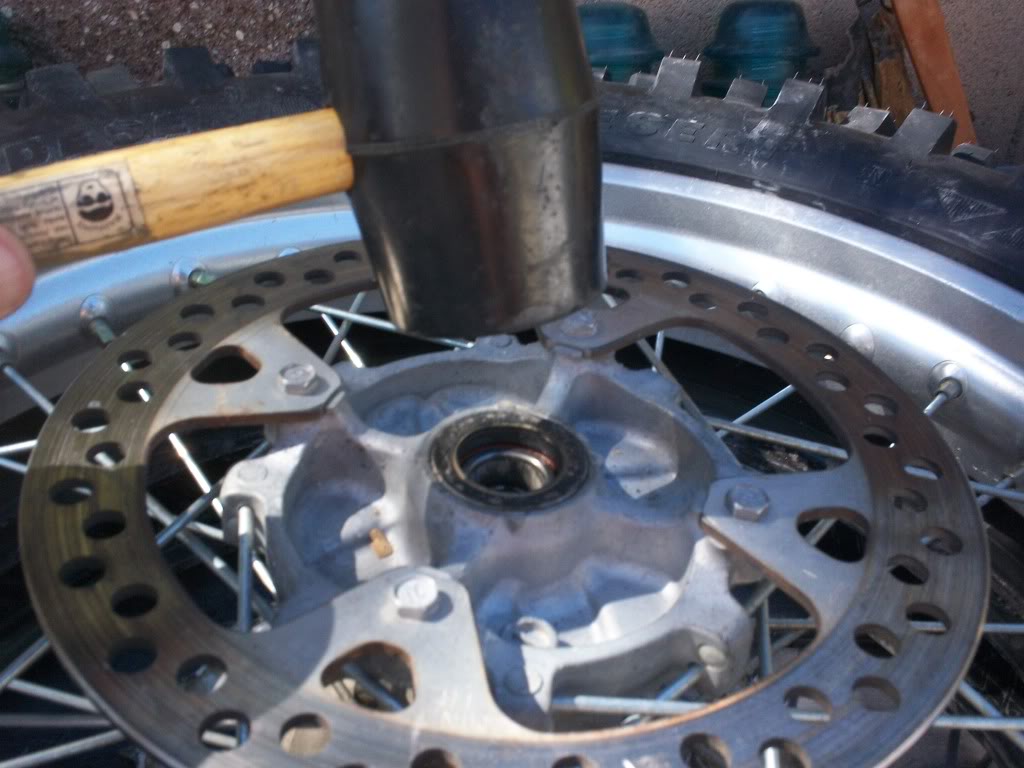
Presto, you are done, now flip the wheel over and do the other side. It takes less than five minutes a side, do this once a year (perhaps more than that if you do a lot of water crossings) and you can have piece of mind of one less thing that can go wrong.
Tools I use are a large screwdriver, a dull pointed exacto knife, and a syringe filled with axle grease and a small piece of tubing on the end

First, obviously, is to remove the wheel, I usually check the bearings when installing a new tire

Use the large screwdriver to gently pry the outer dust cap out

Use a rag to clean as you disassemble, don't use any chemical solvents that could contaminate the bearing grease.
Bearing is now accessible

Now is a good time to do a first check on the bearing, stick your finger in the hole and twirl.....
Bearing should be tight, no side to side play.
Now comes the tricky part, using the exacto knife, CAREFULLY pry off the bearing dust cap by inserting the point on the inside and twisting gently, same idea as using a tire iron on a wheel. Be careful not to cut the soft rubber. A slight twist should result in the seal popping out.

Now you are looking at the guts of the bearing. Hopefully there is grease inside. Check the condition of the retainer - the metal piece that holds the ball bearings in place. If it's worn or broken, the bearing is no good and must be replaced. if it's good and there are no other signs of wear or water contamination, look at the amount of grease, if it's lacking, pack some more in. You can use your finger, but the syringe is a lot less messier, an old syringe from an epoxy kit works great.

Which kind of grease to use is like asking what kind of motor oil to use, everyone has a different answer. You can use brand specific (expensive) grease from your local dealer, I use Bel Ray Waterproof grease, been using it for over twenty years, no bearing failures yet. Fill all cavities but do not over fill, use your finger to pack it in. Next, install the rubber bearing dust cover, sliding your finger around it will cause it to pop into place. Then, use a rubber mallet to tap the outer cover back in. If the outer dust cap is recessed inside the hub an appropriate sized socket along with the rubber mallet can be used to seat it.

Presto, you are done, now flip the wheel over and do the other side. It takes less than five minutes a side, do this once a year (perhaps more than that if you do a lot of water crossings) and you can have piece of mind of one less thing that can go wrong.
